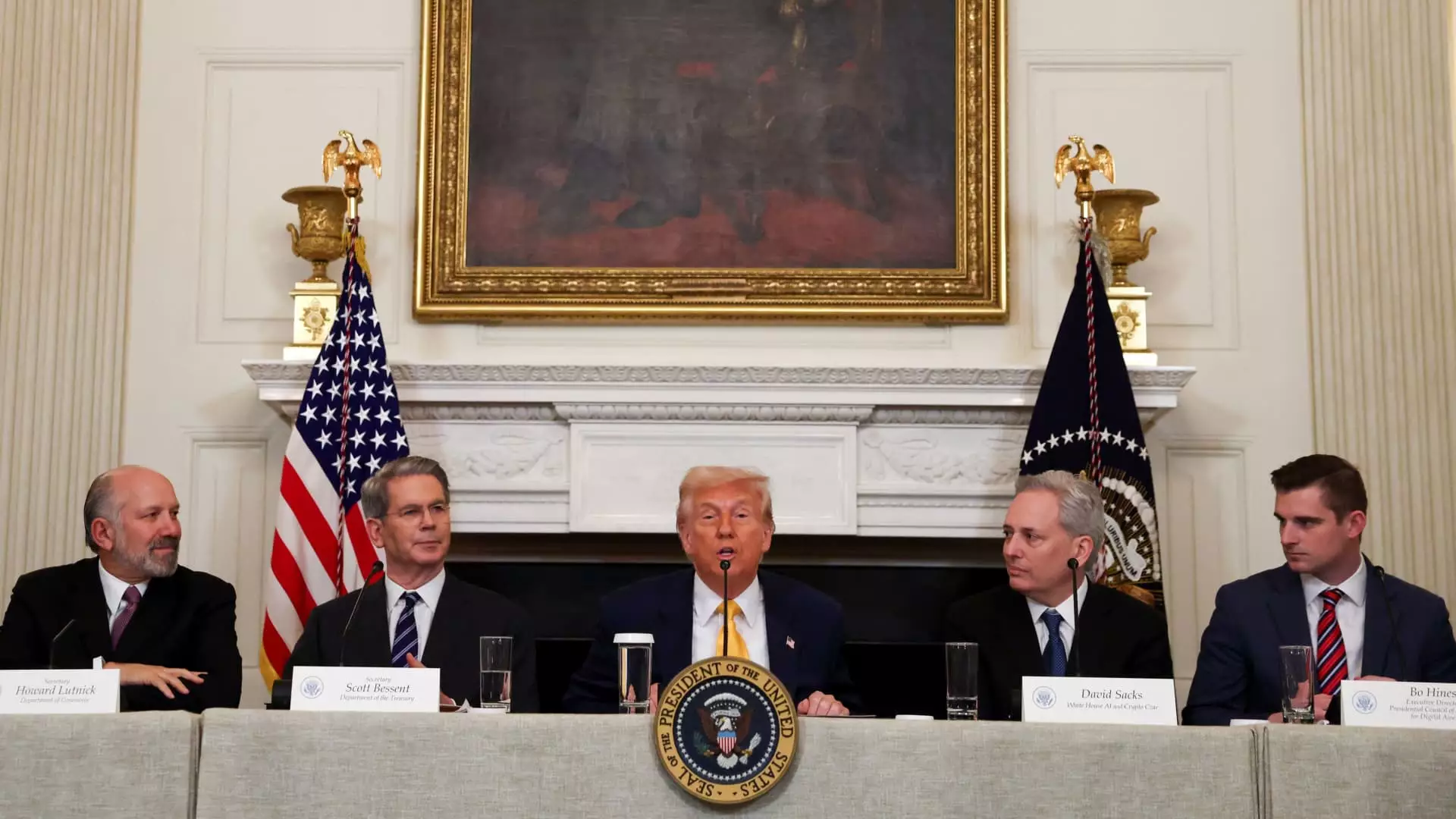In the turbulent world of American politics, few issues elicit as much fervor and debate as cryptocurrency. Enter Bo Hines, a young entrepreneur navigating the often convoluted waters between digital innovation and governmental regulation. At 29, Hines stands as one of the torchbearers of President Trump’s ambitious crypto agenda, aiming to position the United States as the preeminent hub for digital assets. However, his lack of professional experience in the crypto arena raises questions about whether he is up to the monumental task ahead.
A Promising, Yet Inexperienced Figure
Hines’ career journey is a fascinating one. With a law degree from Wake Forest University—obtained just three years ago—he has previously attempted to gain political ground by running for Congress twice, only to fall short of victory in both campaigns. His background as a former wide receiver at North Carolina State University has been highlighted not just as a personal success, but as part of his narrative in aligning himself with Trump. However, his ascendance as a digital asset leader for an administration that once seemed detached from tech innovation poses interesting dilemmas. Can an individual with such limited experience truly spearhead a national strategy aimed at navigating the complexities and rapid changes inherent in cryptocurrency?
Despite these doubts, Hines has taken on the role with a certain fervor, promising to revamp crypto regulation with extraordinary speed. His alignment with David Sacks, a former venture capitalist turned government’s crypto czar, adds another layer of intrigue. Sacks brings a wealth of experience in the tech space, and it will be telling whether his guidance can complement Hines’ somewhat superficial grasp of the industry’s long-term viability.
Breaking Down Barriers to Crypto Growth
Hines claims that one of the group’s priorities revolves around dismantling what they term “Operation Choke Point 2.0,” a policy approach suggesting an unfair crackdown on digital asset firms by traditional banking institutions. According to him, this alleged restraint has stifled innovation and hindered economic growth. Yet, the efficacy of Hines’ proposed measures remains an open question. Are these regulatory reforms grounded in a realistic understanding of both the industry and its potential pitfalls, or are they merely a political ploy to appease a rapidly evolving electorate yearning for the new?
His proposal to create a “Strategic Bitcoin Reserve” through budget-neutral purchases is a particularly fascinating proposition. This initiative, which he describes as akin to “digital gold,” may provide a route for America to uplift its economic posture in the global landscape. However, such ambitious plans come with the risk of financial overreach and unclear accountability. The details are scarce, and whether these ideas translate into practical action remains to be seen.
The Balancing Act of Cryptocurrency Regulation
Hines is quick to praise various regulators, including SEC Commissioner Hester Peirce, for their willingness to adapt the existing regulatory framework surrounding cryptocurrency. Yet without substantive changes to protect investors and foster innovation, will Hines’ approach merely be a façade? The tension between burgeoning technology and established regulatory frameworks is profound. Smart regulation could unlock crypto’s potential; however, it could also lead to undue restrictions that inhibit growth.
While Hines seems optimistic about crypto’s future in America, the specter of Trump’s personal financial interests in cryptocurrencies looms large. With previous involvement in launching memecoins and other digital ventures, questions surrounding conflicts of interest remain relevant. Hines has brushed off concerns about Trump’s financial entanglements, saying, “He’s an American citizen.” However, that rationale may not hold firm under the weight of scrutiny as the administration tackles crypto reform in a partisan atmosphere rife with distrust.
Looking Ahead: The Role of Stablecoins in a Digital Economy
One of the more intriguing assertions made by Hines is the potential of stablecoins to cement the U.S. dollar’s dominance in global finance. This sentiment raises pertinent debates about the economic implications of digital currencies regulated to maintain value against fiat currency. If managed prudently, could stablecoins not only secure the dominance of the dollar but also instigate a broader acceptance of digital currencies worldwide?
As Hines and his team venture deeper into the complexities of crypto regulation, they must remain vigilant about the ever-evolving landscape. They walk a tightrope between fostering innovation and curbing potential abuses, a challenge that could define the digital asset terrain for years to come. A question lingers: Will Hines be able to translate his vision into reality, or will he merely become another face in the ever-churning political machine?

